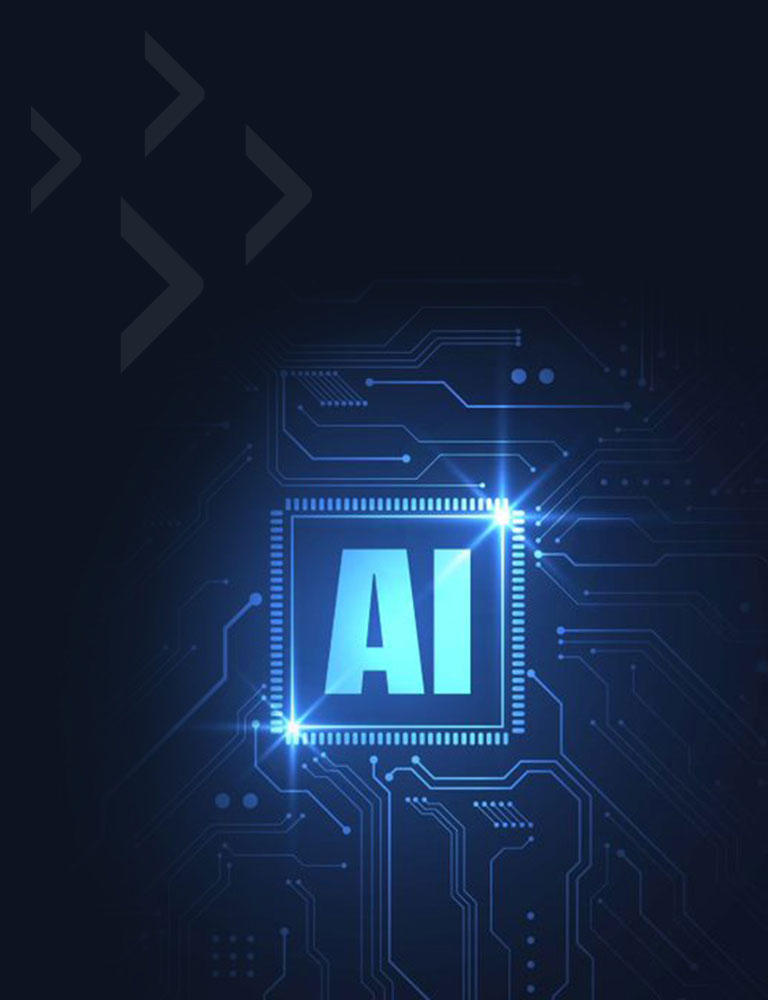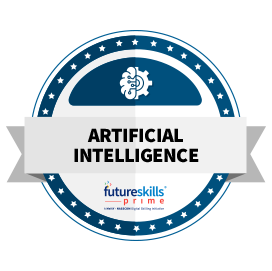Course Provider

What will you learn in this course?
- The course starts with the Mathematics / Statistics part that forms the foundation. Python as a programming language is covered next.
- This knowledge is used in all the subsequent chapters.
- We then embark on the journey of collecting data from different sources and performing the pre-processing so that the resultant data is ready for further processing.
- We then move on to learn different ML techniques. In the process we learn how to prepare ML models and optimize them.
- The chapter on NLP provides an insight on how to process non-numeric data.
- We also cover the data predictions that are a function of time.
Machine Learning through Python
-
 Skill Type
Emerging Tech
Skill Type
Emerging Tech -
 Domain
Artificial Intelligence
Domain
Artificial Intelligence -
 Course Category
Deepskilling Course
Course Category
Deepskilling Course -
 Placement Assistance
Yes
Placement Assistance
Yes -
 Certificate Earned Joint Co-Branded Participation Certificate & Partner Completion certificate
Certificate Earned Joint Co-Branded Participation Certificate & Partner Completion certificate -
 Nasscom Assessment Coming Soon
Nasscom Assessment Coming Soon -
 Course Covered under GoI Incentive
Yes
Course Covered under GoI Incentive
Yes -
-
 Course Price
INR 15,500
Course Price
INR 15,500 -
 Course Duration
200 Hours
Course Duration
200 Hours
-
Why should you take this course?
- Data is the new fuel. Present age is driven by the data. Social networking has revolutionized the way people across the world interact and share the information. Huge volume of data is being generated by people across the world. This innocuous looking data holds trends and information.
- This course teaches the participants how to derive the hidden knowledge from the data. Participants will know how to clean the data, how to process the data and how to analyse the data. They also learn to make predictions based on the data. These predictions help in taking learned decision.
- Job prospects will improve when the participant gets equipped with the knowledge of Machine Learning. Lots of organizations are looking for professionals to work on their data. After completing this course, participants will find themselves more eligible to find a job that suits their expectations.
Who should take this course?
- This course is designed for those people who are looking at embarking on a Machine Learning career.
- Professionals who are working in other technologies but want to shift to Machine Leaning can also join this course.
- It is recommended that the participants should have basic knowledge of Mathematics and Statistics.
Curriculum
- Data Representations: Representing the data using various techniques like Histograms, Pie-charts, Box Plots, Scatter plot etc. Identifying the trends of the data: Mean, Median. Mode, Range. Quartile deviations. Percentiles. Mean Deviation. Standard deviation. Skewness. Kurtosis. Concepts of Probability. Sample, Population. Confidence interval. Estimation. Bayes theorem, Binomial, Poisson, and Normal distribution. Correlation and covariance. Matrices. Distances: Minkowski, Manhattan, Euclidian.
- List, Tuple, Set, Dictionary, Comprehensions, File operations. Python modules: Numpy, Scipy, Pandas, Matplotlib, SKLearn etc.
- Data. Forms of Data. Data sets. Types of learning: Supervised, Unsupervised and Reinforcement learning, Feature Engineering. Pre-processing of data. Analysis of data. Outliers. Data scaling. Bias and Variance.
- EDA, Model Iteration, R-square. Multiple Linear Regression - Variable Transformations, Variable Selection, Overfitting, Evaluating the accuracy of the model. Nonlinear regression. Introduction to Rigid and Lasso regression.
- Decision trees, Random Forest, Naïve Bayes algorithm, Logistic regression, Support vector machine.
- Unsupervised learning. Clustering: Agglomerative (Bottom up), Divisive (Top down). Hierarchical clustering, KMeans, DBSCAN, Mean Shift. Association: Market Basket Analysis, Apriori algorithm
- Association rules, Frequent sets, Eclat, F-P Growth Algorithm
- Bagging: Bootstrapping, Boosting: Adaptive boosting, Gradient boosting, Extreme Gradient Boosting, Stacking and Multi level stacking
- Dimensionality reduction: Principal Component Analysis, Linear Discriminant Analysis, Missing Value Ratio, Low Variance Filter. Optimizing model, improving model iteratively, saving model, Loading model, Deploying model,
- Time series: Secular trend, Cyclical fluctuations, Seasonal variations, Irregular variations, and associated methods. ACF, PACF, ARIMA, Diagnostic curves (PRC and ROC).
- Patterns through regular expression, Stemming, Lemmatization, Bag of Words, TF-IDF model. Markov chain, N-gram model, Sentiment analysis.
- Capstone project
Tools you will learn in this course
- Tableau
- Advanced Excel
- Jupyter
- Spyder
- Python IDE
FAQs
It ranges from One (1) month to Two (2) months
Any undergraduate student with Mathematics as a subject at the 10+2 level, is eligible to attend this course. It is expected that participants attend the course regularly
It is desirable to have a Laptop/Desktop. An internet connection is essential.
Virtual Instructor Led Training (VILT)
Regular fee for the course is Rs 15500/-. Please lookout for Introductory offers which will be made available from time-to-time.
Online payment mode
Joint Participation Certificate for Foundation course shall be awarded to all the participants NASSCOM Assessment (Gold, Silver or Bronze medal) Certificate shall be awarded to the successful candidates
It will add value to the profile. This will help the candidate get noticed by the IT companies
Successful candidates’ profiles shall be made available at the Career Services Portal of SSC NASSCOM through which placement opportunities are facilitated




